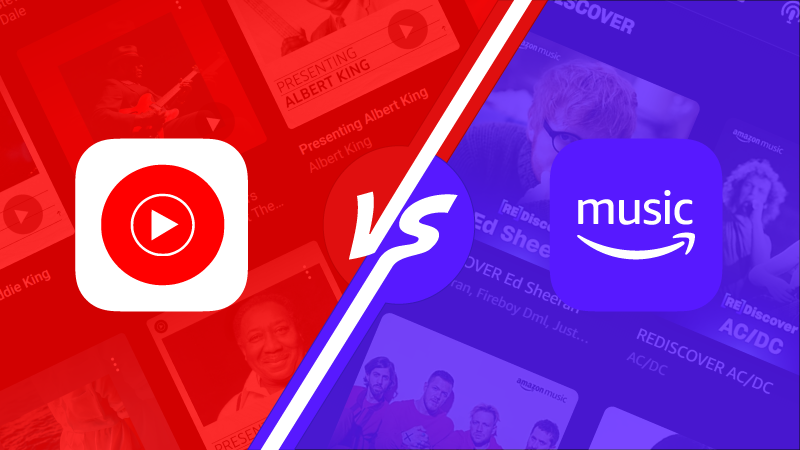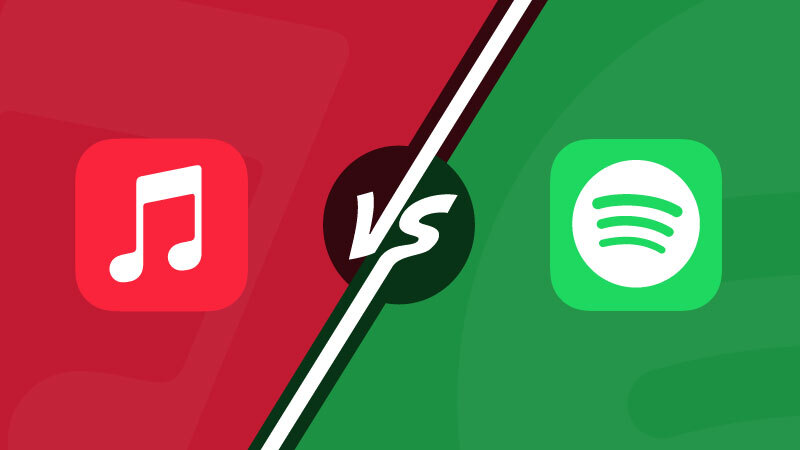Apple Music and Amazon Music are two platforms to which we pay close attention. With their technological innovations, desire to be at the forefront of trends, and special status in the global music ecosystem, they are of paramount importance. We know that many of you use them daily. Or perhaps you’re wondering which of the two best suits your needs and desires. Amazon Music VS Apple Music: Which is better?
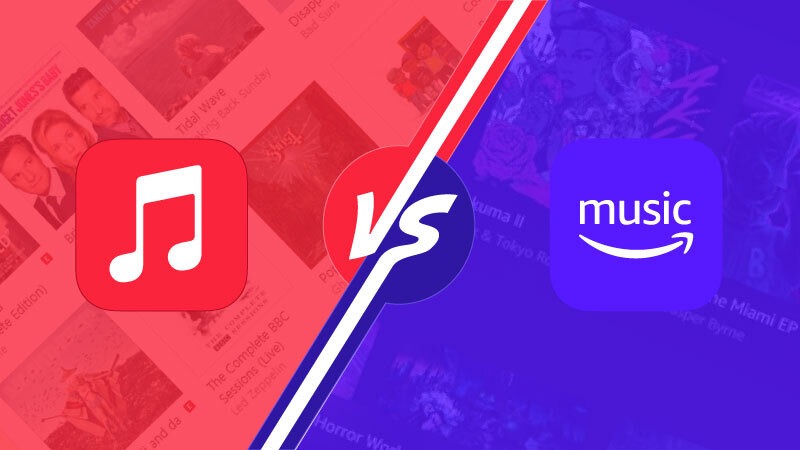
We answer with this new versus!
What’s the difference?
Amazon Music Unlimited was officially launched in 2016 after Amazon had dominated many other areas of the business. It was like a string was missing from Amazon’s bow, and the music world represented endless opportunities. In just a few years, the company’s ascent has been meteoric, but it was preceded by many milestones.
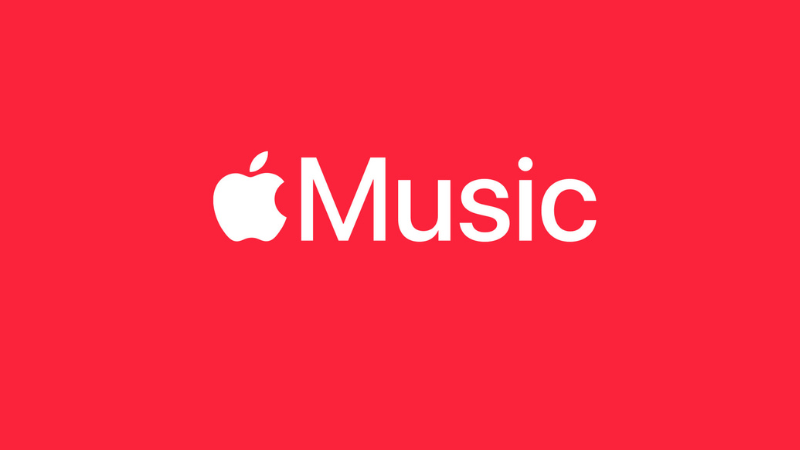
In 2008, Amazon launched Amazon MP3. The same year, Apple Music unveiled iTunes, revolutionizing the music world forever. In 2014, Amazon Prime Music, a new version of Amazon MP3, was launched. Two years later, Amazon Prime users are offered an opportunity. They can benefit from a discount on a new streaming platform that will replace all the others: Amazon Music Unlimited.
Since then, the figures have been impressive. Amazon Music is used by almost one hundred million people worldwide and has become the third most popular platform, behind Spotify and Apple Music. In Japan, the platform is even the second most popular.

Apple Music launched a year before Amazon Music Prime. Building on the foundations of iTunes, and after buying Beats Electronics and absorbing Beats Music, Apple Music is off to a flying start. It’s simple: they are everywhere, both digitally and physically. They launch numerous radio stations, organize events, and adopt a strategy of omnipresence as if they wanted to catch up with their competitors. The strategy is bearing fruit and continues to prove its worth. Along with Amazon Music, Apple Music is one of the world’s most widely used streaming services.
Audio Quality – Amazon Music VS Apple Music: which is better?
There’s no doubt that both platforms are beyond reproach when it comes to audio quality. If they’re not entirely up to the level of Qobuz and TIDAL, the two leaders in this field, Amazon Music and Apple Music, have little to envy them.
Amazon offers HD and Ultra HD music, which translates into richer sound with more nuances. There is also the Dolby Atmos option and 360 Reality Audio, a technology developed by Sony.
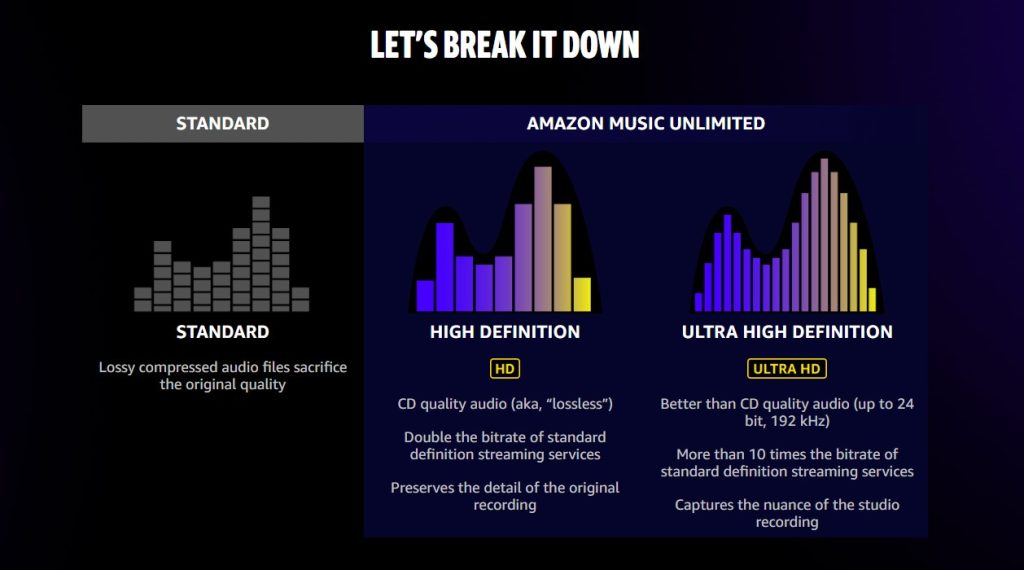
Apple Music also benefits from the Dolby Atmos option, promising total immersion in the sounds of the music you’re listening to. The HD version of your songs is available at no extra cost, an essential point for audiophiles.
In short, Amazon Music and Apple Music offer a similar experience with almost no flaws. Perhaps the more demanding will find a few things to improve on, but we’re sure that for the vast majority, they should be suitable for people who want to listen to music in HD version.
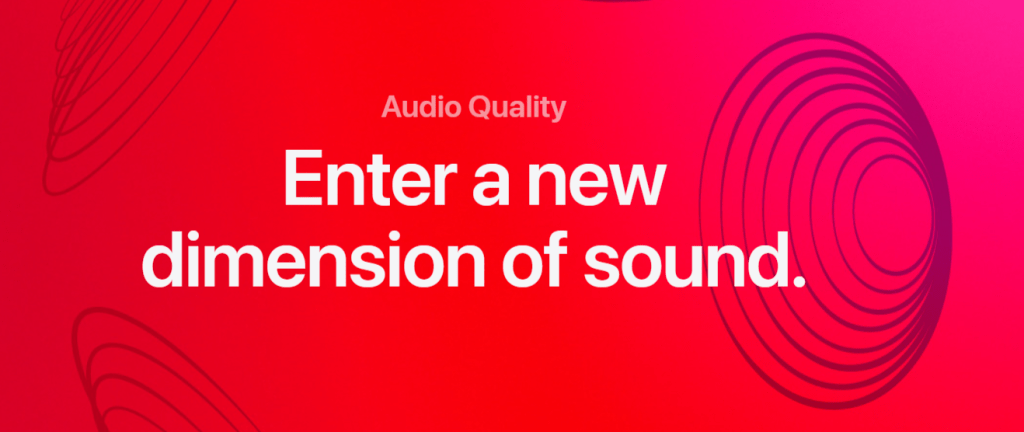
It’s important to note that to fully enjoy all that Amazon Music and Apple Music have to offer in terms of audio quality, you must invest in quality audio equipment. Whether it’s speakers, headphones, or earphones, these platforms deliver a high-quality sound experience allowing you to discover your favorite songs in a new light.
Winner: It’s a tie!
User Experience & Algorithms – Amazon Music VS Apple Music: which is better?
The two services are equivalent in many respects, except for the user experience and the algorithm. Apple Music still appears to be well ahead in this area.

One reason is that Apple Music has designed its platform as a cultural hub. With the creation of special programs, genre-specific radio stations, and identified journalists, they go far beyond the framework of music streaming. Apple Music also organizes numerous events. A recent example is the Superbowl, to which we recently devoted an article. Subscribing to Apple Music means benefiting from an environment, a creative ecosystem, and an experience that supports and extends the listening experience.
Moreover, its algorithm is quite different from that of its competitors. It’s based more on discovering albums than playlists. This is unnatural in today’s context of playlist proliferation. But at Soundiiz, we like the idea. It’s probably less “modern” and less in tune with the times, but it’s good for you and gives albums a new value. This doesn’t mean you can’t listen to playlists if you’re an Apple Music subscriber. For example, the “New Music Mix” section is widespread, and its recommendations are relevant.
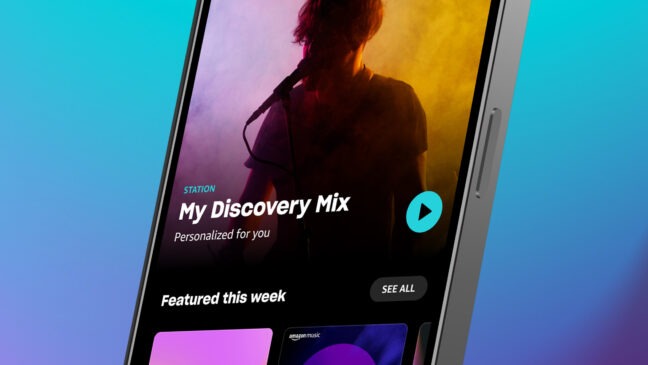
If you own a Mac, an Apple Watch, an iPhone, or other Apple products, using Apple Music will be all the more fluid and allow you to connect your different tools easily.
What about Amazon Music Unlimited?
Amazon lags behind the competition in the discovery of new music. They are mainly based on a playlist, “My Discovery Mix, ” updated at the beginning of each week. After analyzing feedback from some users, we found that opinions are mixed. While it’s far from ineffective, the suggestions sometimes need to be revised and seem to repeat themselves. Nothing dramatic, but more is required to compete with its competitors in the algorithm sector.
On the other hand, the Discover New Music section, which is dedicated, as its name suggests, to discovering new artists, is rather well thought-out. Its design is efficient, and its ergonomics are optimal. A voucher for Amazon Music! But once again, it’s not enough to compete in a highly competitive sector.
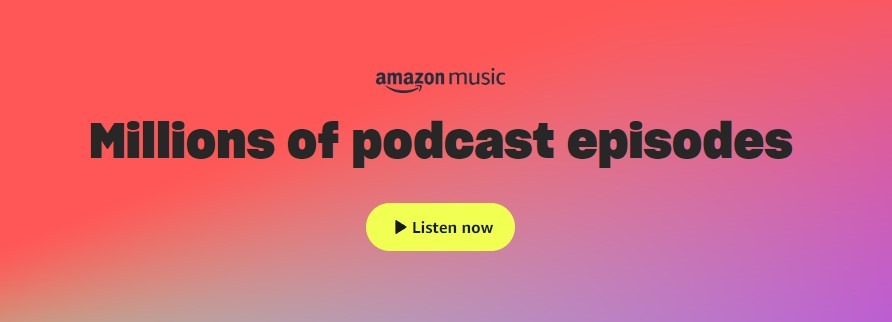
Another nice feature is the lyrics section, which is well thought out and not invasive. When available, the lyrics of the songs you listen to are available discreetly without hindering the listening experience.
From an ergonomic point of view, the two platforms are equivalent. Amazon Music appears busier and, therefore, potentially more challenging to navigate. On the other hand, Apple Music emphasizes its radios and ancillary content. It may seem invasive, but it’s judicious and effectively extends the listening experience.
Winner: Apple Music
Which one pays artists better?
This is where the most significant difference lies. According to a study by RouteNote, Amazon Music is among the platforms that pay artists the least. With a Pay-per-stream calculated at $0.004, more is needed to effectively combat the casualization of artists with the arrival of streaming.
Even if there is room for improvement, Apple Music is well ahead of Amazon Music. RouteNote’s Pay Per Stream is set at $0.01 on average.
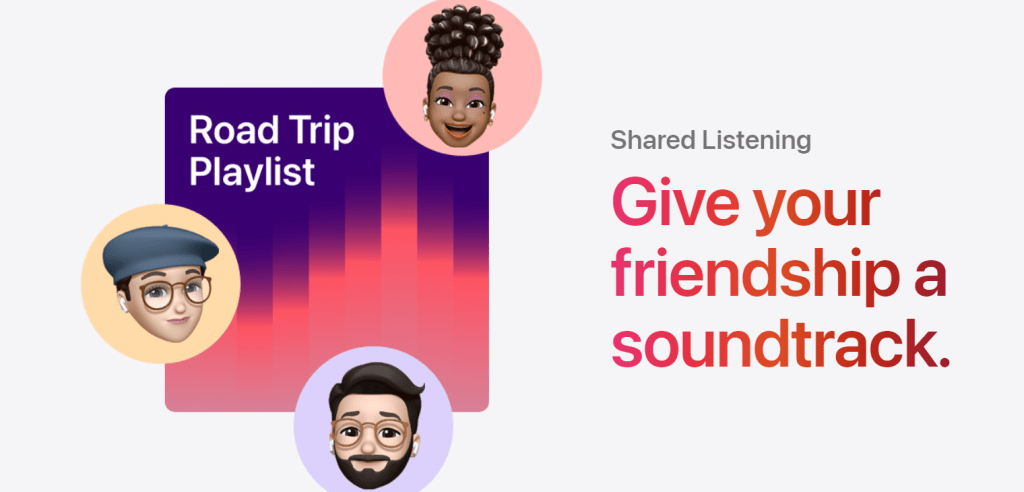
These figures are likely to change over the coming months and years. Especially if we consider that more and more artists and their representatives are campaigning for an overhaul of the music streaming system, which is deemed insufficient to enable artists to make a living from their music. We devoted a detailed article to the mechanics behind streaming platforms’ remuneration systems.
Winner: Apple Music
Price & Subscription – Amazon Music VS Apple Music: which is better?
– (as of November 2024) –
The Amazon Music Unlimited offer is clear and perfectly explained on Amazon’s website.
As a Prime member, you can join Amazon Music Unlimited for $9.99 per month or $99 per year for an annual subscription. Non-Prime customers pay $10.99 per month. If you have kids, check out the family plan, which costs $14.99 per month or $149 per year and lets up to six family members listen on different devices simultaneously.
Unlike Apple Music, Amazon Music Free is a free version of the service. However, you’ll have to endure some advertising, which can be a differentiating factor for people on a tight budget!
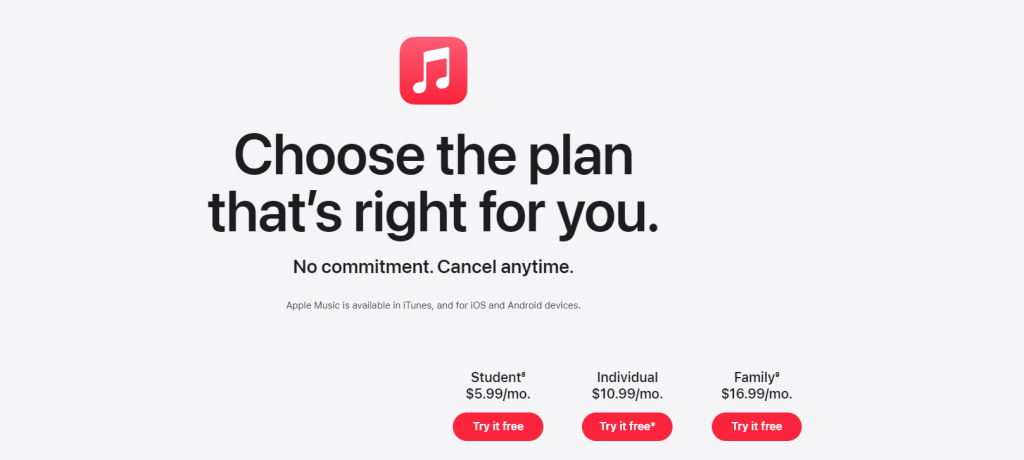
On the Apple Music side, subscription plans are equally straightforward. Several plans are available:
- A student plan at $5.99 per month
- An individual plan at $10.99 per month
- A family plan at $16.99 per month
You can take advantage of a free one-month trial and unsubscribe anytime. For the individual plan, Apple Music costs the same as Amazon Music Unlimited and a dollar more if the Amazon Music Unlimited offer is coupled with an Amazon Prime subscription.
If you use an eligible device, you can get three months of free Apple Music. For the terms and conditions of this offer, click here.
Winner: Amazon Music Unlimited.
Coupled with an Amazon Prime offer, Amazon Music Unlimited becomes an attractive value-for-money proposition. Given that price is a significant argument for many users, it’s hard not to give Amazon Music the edge!
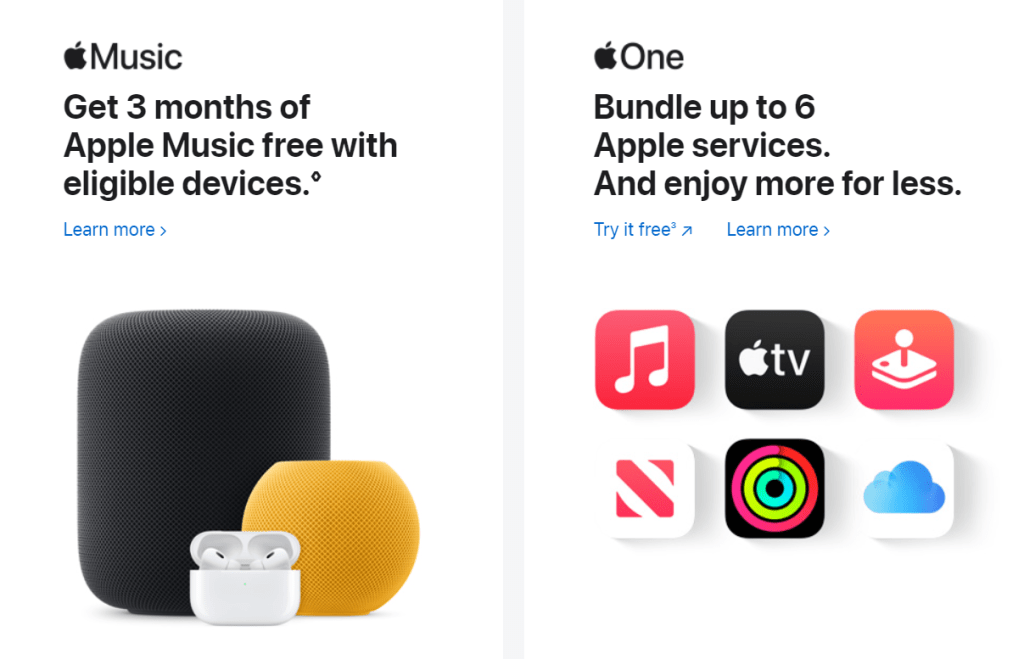
But if you use one of the devices identified by Apple Music, we advise you to opt for Apple Music instead.
Catalogs – Amazon Music VS Apple Music: which is better?
– (as of November 2024) –
At last count, Apple Music and Amazon Music Unlimited had roughly the same number of songs in their catalogs. With over one hundred million songs, the two platforms are among the best-endowed on the market.
But here’s the rub: Amazon Music covers fewer territories than its competitors. As of August 2024, the service is only present in 49 countries, over three times less than Apple Music. This can change in the coming months and years, but it is holding back Amazon Music’s expansion.

In terms of ancillary content, it’s a similar story. Numerous podcasts and audiobooks are available—nothing to give either platform a significant advantage.
Amazon Music, however, stands out for its videos and live performances. It is ahead of its competitors in terms of video and live performance. Amazon has been in this game longer and has the expertise to offer a broader range of services.
Winner: It’s a tie.
Amazon Music VS Apple Music: which is better?
Let’s make no mistake: both platforms should offer everything a music lover has the right to expect from a music streaming service. Excellent audio quality, a solid catalog, powerful algorithms, and impeccable ergonomics—Amazon Music and Apple Music are equal in many respects.
But if we had to choose just one, we’d go for Apple Music. After years and years of existence, they have succeeded in going beyond music streaming. What’s more, they’re available in many more countries.
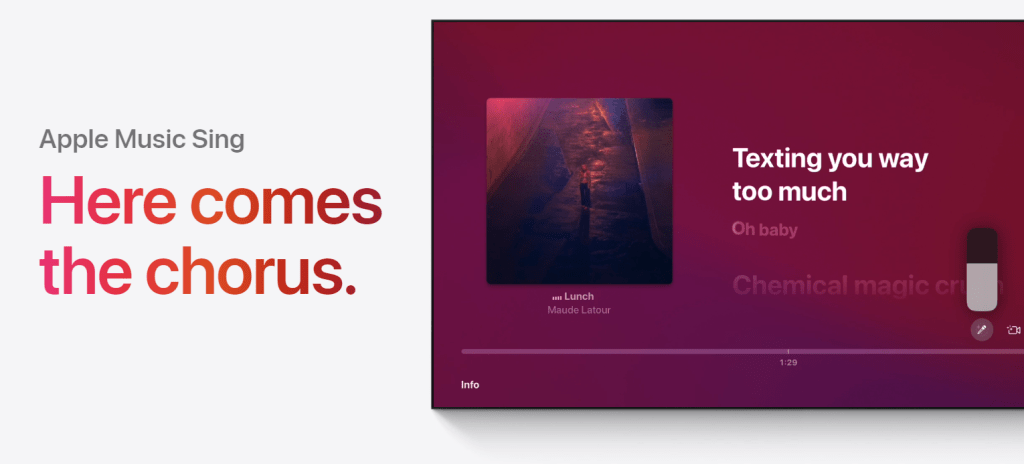
And since we need to know which country you’re reading this from, we’d be hard-pressed to recommend a platform that isn’t available in your country.
On the other hand, if you live in one of the countries covered by Amazon Music Unlimited, it’s certainly worth testing out what the service offers. It’s almost flawless, coupled with an Amazon Prime subscription, it’s unbeatable value for money.
Soundiiz: Transfer your playlists from one music service to another
You’ve made your choice. After reading our Versus, you chose between Amazon Music Unlimited and Apple Music. And that’s when things get complicated for many users. How do you migrate from one platform to another or from your old streaming service to Apple Music or Amazon Music?
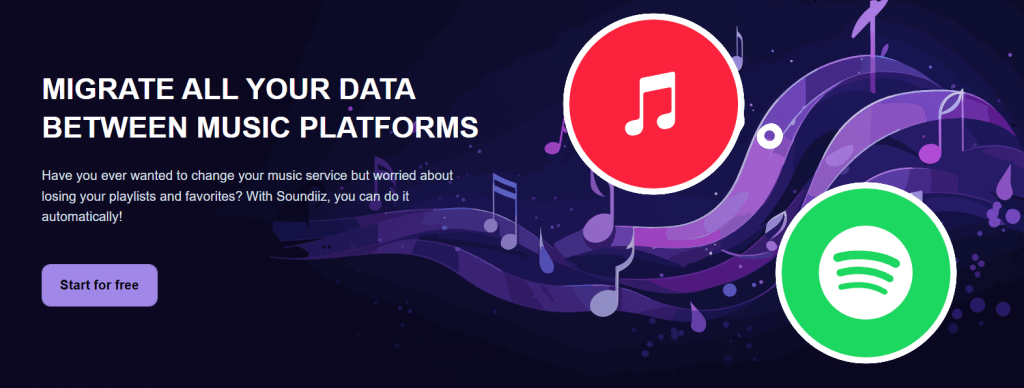
One of the main things that could prevent you from changing your music streaming platform is losing all your music collection, including your playlists, favorite albums or tracks, and followed artists. Rebuilding this library with a new service could be time-consuming and even impossible, depending on the size of your collection.
Soundiiz solves this by doing an advanced matching process, allowing you to move quickly and with no effort from Deezer or YouTube Music to any other platform you choose. You can also migrate, for example, your data from Apple Music to Deezer or Spotify with Soundiiz! Then, keep your playlists updated by using the playlist Synchronization feature.
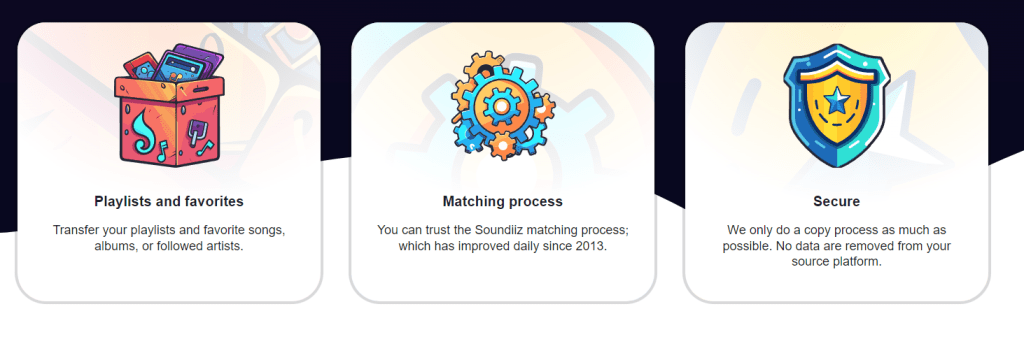
When you unsubscribe from a streaming service, your data and playlists can be deleted. Using Soundiiz, you can create your Deezer or YouTube Music playlist backups as CSV—convenient!
So go ahead, sign up for a thirty-day trial, once with Apple Music and once with Amazon Music Unlimited, and choose the best one!


